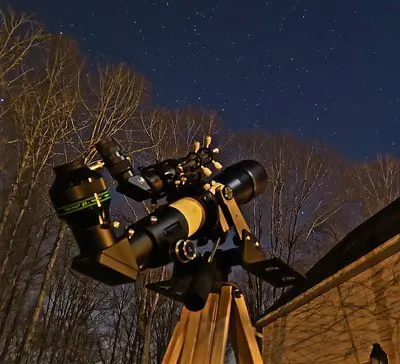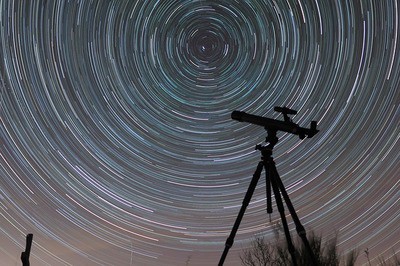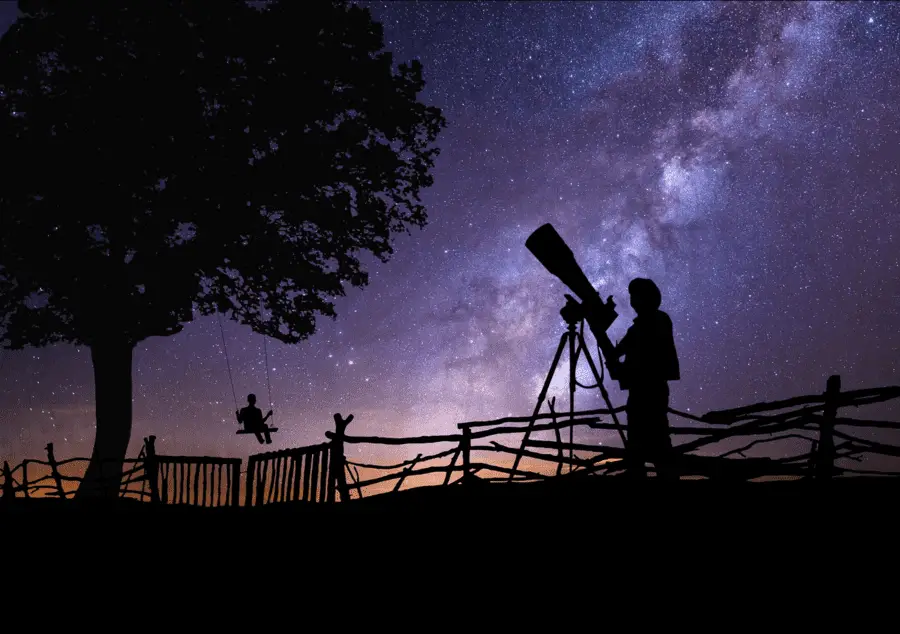In contrast to reflecting telescopes, a refractor telescope or refractors make use of lenses to gather light from objects and direct it towards the eyepiece. It is the very first telescope. The first design being crude, but functional viewed distant objects on the horizon and in space, which led to discovery and understanding of the night sky.
A refractor telescope is composed of two lenses; an objective lens and an eyepiece. Light travels through the objective lens and is slightly bent (refracted) to create a focal point for the eyepiece to receive. The eyepiece magnifies and straightens the light for your eye.
This telescope has several things to admire and gripe about. But the final decision of whether to have one or not rests in your hands.

Below are some more in-depth details regarding refractor telescopes. So, let’s start at the beginning.
Who Invented the Refractor Telescope
The first invention of a refractor telescope was in the Netherlands in 1608 by Hans Lippershey and Zacharia Jannsen.
This has been considered as the first invention, although some parts of the world have been using refractors at some point in time already. For instance, Jacob Metius has applied for a patent of his refractor telescope at the same time as Hans and Zacharia. This situation burst out the controversy of who is the legitimate inventor of the said tool.
Meanwhile, the first version of the refractor was further enhanced by Galileo in Venice during 1609. This improved scope made use of a convex lens to make the outcome image in an upright orientation. Galileo’s enhanced refractor became the first viable telescope for astronomical studies.
Later on, issues about spherical and chromatic aberration sprung up in the community. Luckily, John Dollond, a British optician, found a cure for this issue. Dollond created the first patented achromatic refracting lens in 1733. Instead of having a tube 150 feet long, the length of the refractor scope was able to shrink to about 8 to 20 inches.
Why Do We Still Use Refractor Style Scopes
True, that refractor telescopes have limitations and setbacks, but it does not remove the fact that it is still a viable tool. In fact, a simple refractor scope is the best considering those who are starting out with astronomical studies.
Some of the modern telescopes today are even hybrids of a refractor and reflector telescope. A good example is the Schmidt Cassegrain scope. See our articles on the reflector, and Cassegrain telescopes.
A better way of explaining the continued existence of a refractor telescope is seeing the pros and cons.
Pros
- Suitable for viewing things during the day and images are upright to the observer
- Images formed are as sharp as that of reflecting telescopes
- Easy to carry around
- Best choice when viewing flat terrains
- There is less degradation of imagery because it has a sealed tube
- No more re-alignment of lenses or collimation
- Easy to operate
Cons
- The issue on spherical and chromatic aberration wherein a color fringing overlaps over the image formed
- The lenses used for this scope have a higher upfront cost particularly if you will be buying a larger size scope
When is the Best Time to Use a Refractor Style Telescope
Like any other devices, there is a preferred time of when to use a refractor scope. If one will be doing an observation of celestial bodies just near Earth such as the moon and other planets, then a refractor scope is an ideal choice.
Likewise, this kind of scope is economically practical for those starting out a hobby or study about space and stars. If one wants to view the planets, or bright deep space objects (DSO’s), then a refractor scope is a good fit. To learn more about planet viewing and filters, check out our in-depth article here.
This telescope is an excellent choice for people new to stargazing because this device is effortless to maintain, set up, and adjust for viewing. It does not take up much space either if you are limited on storage space.
What is APO Mean?
The larger APO refractor telescopes are sought after for their quality optics. Many astrophotographers prefer this route because of all the pro’s, and the chance of chromatic aberrations is reduced or removed.
APO stands for apochromat, and in short means that there are multiple lenses to adjust and correct the color distortions of light traveling through glass.
These telescopes come with a higher price tag, but the simplicity of use and care may make it worth it to you. Check out Amazon page of APO refractor scopes and the current going prices
How Does the Refractor Telescope Work and How Do You Use One?
The main principle underlying the operation of a refractor telescope is the law of refraction. Light travels in slightly different speeds at different mediums. In a vacuum, it travels at around 3.0 x 108 meters per second.
Index refraction is a unit describing the density of a medium as light passes through it. A medium with a high index of refraction has higher capabilities of slowing down light’s speed. For instance, light slightly travels slower when passing through glass compared in air medium.
In line with this, a refractor telescope uses two lenses, that is, a large convex objective lens and an eyepiece lens. The convex objective lens is located at the tube entrance from where light from an object enters.
As parallel light passes through the convex lens, it refracts and intersects at a single point inside the tube. This scenario makes the object look smaller than its real size. After that, the light rays spread back out towards the eyepiece in an inverted view. The eyepiece refracts the light back into a straight line again. The focal point of the eyepiece is what determines magnification. Precise focus is achieved when the two focal points of the objective and the eyepiece are aligned.
Where is the Best Place?
If you are new to star gazing and you have just newly bought a refractor telescope, then it is time to test it and be amazed. To ensure an excellent experience for star gazing, be sure to be in the most suitable place of doing it. The less light pollution, the more you will see.
In the United States, here are the top 5 places to be if you want to have a great stargazing experience.
1. Cherry Springs State Park, PA
This 82-acre park has been a top pick for new and professional stargazers. At night, the place is completely filled with darkness, but the sky is full of numerous amounts of stars scattered around the space.
2. Big Bend National Park, TX
In West Texas, this park has been genuinely known as a good spot for avid astronomers. Likewise, the state has implemented several rules to maintain its status as an International Dark-Sky Association (IDA) park. See a Dark Sky Map.
3. Natural Bridges National Monument, UT
This first IDA park is situated in Utah and has been ultimately popular for its dark skies filled with hundreds of stars twinkling at night. Moreover, there are no bits of smog over the sky, and the place is air pollution-free.
4. Death Valley National Park, CA
This is one of the remote parks in the United States, which is famous for beginners and professionals in the field of astronomy. The beautiful rock formations complement the view of the dark sky filled with stars. Further, the place and the night sky look astonishing during the full moon.
5. The Headlands, MI
Going to the eastern side of the U.S., this park situated in the Straits of Mackinac is completely dark during night time. But when you look up, you would be amazed by the vast numbers of stars lighting up the dark sky. One can easily spot the Northern star in this park. To Learn More about how and why to find Polaris the Northern Star read this article.
Wrap Up
Now we have come to the last part of our talk about a refractor telescope. Hopefully, we have given you enough details and understanding regarding this viable tool for studying and observing celestial bodies. Like the reflecting telescope, a refractor also has its things to admire and gripe.
The best thing we love about this scope is that it is very straightforward to set up and use. Collimation or alignment of the lenses is not needed, regarding it is in a constant position already. Likewise, it can be regarded as an excellent viable, simple tool for those starting out in stargazing.
On the other hand, the major setback to gripe about it is its chromatic and spherical aberrations. Springing for a good quality refractor will pay for itself in the end.
Although some scopes today are already made from achromatic lenses to avoid these issues. Lastly, the prices of the larger refractors are higher because large lenses have a higher cost to manufacture. It often comes down to the wallet, Best Wishes!
Check out this beginner article on reflector telescopes. What Is A Reflector Telescope?
Will Montgomery explains how refractor telescopes work — with clear advice from years of experience helping others choose their first scope.



